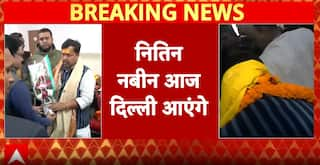New alliances in Nepal may not be good news for India

The two mainstream Communist and Maoist parties of Nepal have come together to jointly contest next month’s national election. The development has ramifications both for Nepal’s internal politics and on India-Nepal relations. The immediate impact will be seen in the outcome of the poll.
The sudden forging of this relationship has taken even the most seasoned observers of Nepal’s politics by surprise. There appeared no apparent need for the Communist Party of Nepal (Maoist Centre) and the Communist Party of Nepal (Unified Marxist-Leninist) to tie the knot. The Maoists under the leadership of Pushpa Kamal Dahal ‘Prachanda’ have had a fairly easy-going relationship with the Nepali Congress in recent months and have shared power too. Until recently Prachanda had been Prime Minister in a coalition Government comprising his party and the Nepali Congress.
Prachanda has claimed that the time had come for the two communist outfits to merge into a single entity. While on the surface the two parties may not be too ideologically distant, they have also been not friendly. As Prime Minister, CPN (UML) leader KP Oli had boxed Dahal into a corner on the excesses the Maoists had committed during the ‘revolution’ phase. Oli had also put the by-now moderate Maoist chief into an embarrassing position by taking a strong line against India and warming up to China. Prachanda had himself adopted a similar posture when he had become Prime Minister for the first time in 2008, but apparently learned his lessons after he was forced to quit office. Thus, on gaining the prime ministership for a second time recently, he lost no time in reaching out to India.
Perhaps it suits both Oli and Prachanda to fight the Nepali Congress jointly. They have realised that individually their parties have no chance of securing a majority to rule on their own, so they have decided to pool in their resources. Prachanda had also forfeited the enormous goodwill of the Madhesi community after he failed as Prime Minister to address their concerns. With the Madhesi support, largely in the plains, gone, and the Hill voters hopelessly split among the Maoists, the communists and the centrist Nepali Congress, the Maoist leader must have realised the futility of battling away on his own. It’s a sentiment Oli and his party would also share.
The Nepali Congress, thus, has a fight on its hands. Not only does it have to now face the joint brunt of the communist and the Maoists, it also has to contend with another rival, Baburam Bhattarai and his Naya Shakti Party, who too had thrown his lot with the communist-Maoist combine. Now, more than ever, it has to decisively win over the affection of the disparate pro-Madhesi parties. The centrist party has been weakened over the years due to factionalism and has had to depend on the Maoists and the communists to rule. With that support gone, it needs the Madhesis more than ever.
To regain lost ground, it must get the Madhesi voters on its side and rally the anti-Maoist/communist sentiments in its favour. The first may be easier than the second. The Madhesi outfits are now left with no option but to support the Nepali Congress. They have already lost out in the local body elections held so far because of their agitational stance. But they need to be together because the communists-Maoists will work to divide and rule.
The India factor comes in here. The Madhesis in Nepal look to New Delhi for support in their political struggle. That India has done its bit over the years is known. However, New Delhi cannot be seen to be overly influencing the course of events in Nepal. As it is, the new Maoist-communist combine, or at least Oli and his team, will deploy the card of ‘Indian interference’ in Nepal’s sovereign affairs. Oli did that rather openly during the economic blockade period and used the occasion to get closer to China. Politically, he gained from the aggression. But at the same time, India cannot be oblivious to the fact that a communist-Maoist regime in Kathmandu has the potential to unhinge India-Nepal relations. Besides, it may lead to fresh unrest in the plains of Nepal which will directly impact India.
Prachanda is a practical politician, but how is Bhattarai the ideologue going to adjust in the new scheme of things? He has been a strong proponent of state restructuring and believed in heeding Madhesi demands and aspirations. One of the reasons he had parted ways with Prachanda was his belief that the Maoists had failed the Madhesi community. It’s unlikely that he will be able to persuade his new colleagues to see his point of view.
Finally, if Prachanda believes that it’s time for all communist parties to merge and create a new organisation, what about the many factions within his own grouping? Hardline outfits led by Mohan Baidya ‘Kiran’ and Netra Bikram Chand long went their different ways, opposing Prachanda’s embrace of mainstream politics after the end of the People’s War in 2006. It does not appear that they will relent, because even the Maoist-communist combine is, after all, an opportunistic ploy to gain mainstream power.
(The writer is Visiting Fellow at Vivekananda International Foundation, political commentator and public affairs analyst)
Disclaimer: The opinions, beliefs and views expressed by the various authors and forum participants on this website are personal and do not reflect the opinions, beliefs and views of ABP News Network Pvt Ltd.


























